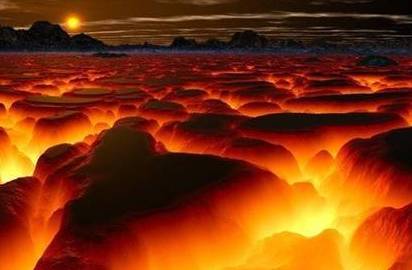-
Light Passing Through Dense Media
Posted on October 9th, 2010 No commentsPart of the catechism of the physics establishment is that “Light is slowed when it passes through a dense medium.” As an engineer I find it a refreshing change to find something with which I can agree with the physicists. However, as it is obvious that anything (freely) passing through any medium will slow down, it is not really an earth shattering ‘discovery’. Note: Anything constrained to pass through a medium may in fact be forced to retain its original speed, or even to increase its speed. This point is of particular importance in explaining some colour phenomena.
The important point about the statement is in its relationship to experiments carried out to verify it.
White light passing through different lengths of ‘dense’ medium, showed different colours depending on length.
The light exiting from the longest length of ‘dense’ medium was blue.
The physicist’s conclusion from this fact is that only the blue light had sufficient energy to pass through the dense medium! Note: This is one of the ‘proofs’ claimed by physicists of the higher energy of blue light.
Let us look at this conclusion. Consider 3 lengths of a ‘dense’ medium.
Length No.1 (the shortest) emits only yellow light.
Length No.2 (the mid length one) emits only red light.
Length No.3 (the longest) emits only blue light.
The energy of the light exiting the dense media gives Yellow as the highest and Blue as the lowest energy.
The bottom strip is really a true (possible) spectrum. If you removed the interface colours, Orange and Purple you would be left with a perfect spectrum of White, Yellow, Red and Blue. Note:- This is only a spectrum relative to the human eye, other creatures may have different ranges.
But according to the physicists only Blue light has the energy to pass through the longest length!
Any engineer who proposed such a naïve conclusion would have been demoted to tea-lad, (Under supervision.). If we equate the above filters with water passing through a pipe, then the physicists conclusion would be that if water coming from the end a 10mile x 1” diameter pipe was only at low pressure then this meant that only low pressure water had the energy to travel that length of pipe!
For those of you who (like physicists) have never had any interest in mechanics, the water pressure in your pipes depends on how far you are from the supply pumps. If you are within a few hundred feet from the pumps your water pressure is very high, if 10 miles away , very low. This is because energy is lost due to friction and other reasons. The same thing applies to light.
Oddly enough, (or logically), you do not get Cyan, Green, Magenta, Mauve, etc., etc, you only get White, Yellow, Red and Blue and interface mixtures such as Pale yellow, (Between White and Yellow) Orange, (Between Yellow and Red), and Purple, (Between Red and Blue). You do not get Cyan because Cyan is a mixture of White and Blue, and in the experiment this cannot happen because of the intervening Yellow and Red bands. You do not Green because Green is a mixture of Yellow and Blue and this cannot happen because of the intervening Red band. You do not get Magenta because Magenta requires compression, a situation that I will explain later.
In the magnificent photograph below you see an example of light passing through a dense medium. It shows a cloud layer passing over an active volcano. [This photograph was passed to me by e-Mail, from an unknown source. Over a year I get thousand of photographs with no information on the source]
Where the cloud layer is thinnest, bright Yellow is seen. As the cloud gets thicker, the colours go through deeper Yellow then Orange then Red then Purple. Interestingly, where the sun is shining on top of the cloud layer a dark Brown/Khaki is seen. You are seeing this by projected light from your computer. you would be seeing the photograph by reflected light. The only difference between the two is due to limitations of colour handling of your monitor and the limitations of photo printing.
Author- Brian Williams

Volcano Cloud


